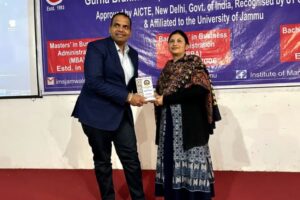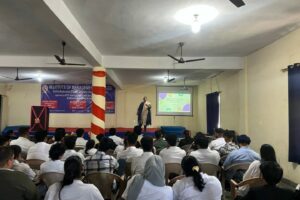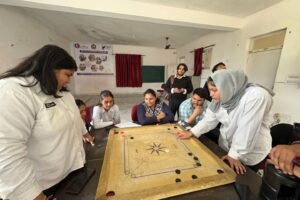IIC Cell of IMS, Jammu organized session on “Problem Solving and Ideation”
The Institution’s Innovation Council (IIC) of IMS, under the Ministry of Education, recently organized a highly informative session on Problem Solving and Ideation, led by Dr. Meenakshi Sharma, Director IMS. The session aimed to provide students with essential skills to approach challenges innovatively and to promote an entrepreneurial mindset within the campus. The event started with an introduction by student hosts Vaibhav and Vridhi, who set the tone for the insightful day.
Dr. Meenakshi Sharma began by emphasizing the critical role of the IIC cell in fostering a culture of innovation and entrepreneurship. She spoke about the concept of problem-solving, explaining that it is not only about following a logical sequence of steps but also about thinking creatively to find practical solutions. In her talk, she highlighted various problem-solving techniques, including root cause analysis, which helps identify the deeper causes of a problem to prevent it from happening again. She also introduced the fishbone diagram, a visual tool that organizes potential causes of a problem in a structured manner, aiding in deeper analysis. Furthermore, Pareto analysis, known as the 80/20 rule, was discussed as a method to prioritize the most significant issues, enabling students to focus their efforts on solving the problems that have the greatest impact. Design thinking was also mentioned as a human-centered approach to problem-solving, which emphasizes empathy and user-focused solutions.
In addition to problem-solving, the session covered the topic of ideation, which involves generating and developing new ideas. Dr. Sharma explained various ideation techniques, such as brainstorming, where participants freely generate as many ideas as possible without judgment, fostering creativity. She also described mind mapping, a technique that helps organize and connect ideas visually, allowing for a more comprehensive exploration of the problem. Another method, SCAMPER, was introduced as a way to stimulate creative thinking by challenging existing assumptions. This technique encourages students to consider various ways to approach a solution, such as substituting, combining, or modifying.





